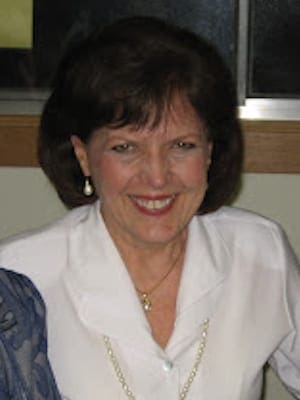American schools have long taught the English grammar rule that allows the words “man” and “he” to refer to both males and females. This practice has evolved along a convoluted path.
According to Carolyn Jacobson in the English department at the University of Pennsylvania, “man” was once a truly generic word referring to all humans. One document even refers to a seventh-century princess as “a wonderful man.”
But the meaning of the word “man” has gradually narrowed to refer only to males.
In the 16th and 17th centuries, upper class boys needed help preparing for their Latin studies, so English grammar rules were created. As a result, “he” officially came to mean “male” only, not “male and female.”
Then a problem arose with using “they” as a singular, rather than plural, pronoun. Eventually, grammarians drafted legislation that included establishing “he” as a generic pronoun.
An 1850 Act of Parliament officially stated that “words importing the masculine gender shall be deemed and taken to include females.”
The new law sanctioned “he” as a generic pronoun, but application of that law was quickly ignored.
In 1879, for instance, female physicians seeking admission to the all-male Massachusetts Medical Society were denied acceptance because wording in the society’s bylaws referred to members only as “he.”
English, like other languages, is still evolving. In the 21st century, words like “man,” “men,” “he,” “him” and “his” are officially generic, but in practice they are usually male-specific.
Studies show that, despite knowing traditional grammar rules, both adults and children tend to think of male, not female persons, when hearing or reading masculine pronouns.
Author Carol Becker (“Leading Women”) observes that our grammar rules promote a double standard that allows both men and women to hear male language as neutral and female language as gender-biased.
She notes: “Our habit of using masculine pronouns reminds us constantly that men are active in human history. …Using ‘he’ to talk about humanity works in favor of men and contributes to the invisibility of women.”
In “O Come, Let Us Bow Down and Worship,” author Deborah Moore Clark adds that we must choose our words carefully because “language often warps and filters meaning and understanding. …Words, like mirrors, reflect our attitudes … bear witness to our beliefs … influence our behavior and the behavior of others.”
That is why gender-inclusive language is foundational to the issue of “women’s place” in church and society.
The way we speak shapes the way we think and act. Women will never achieve full equality and opportunity as long as female gender is absorbed into male terminology and imagery.
It’s not a matter of being politically correct; it’s a matter of putting our theology into practice. The gospel message of inclusion cannot be delivered adequately in the vehicle of gender-exclusive language.
The good news is that we can begin changing the status quo, one individual at a time, by adjusting the way we speak and write. It will take sustained effort, akin to becoming fluent in a second language, but it can be done.
Where to begin? People often stumble over feminine imagery for God (a theological issue for some, which I will address in an upcoming article).
So it seems easier to start with using gender-inclusive terms (rather than male-oriented terms like “man” and “he”) when speaking of males and females as a combined group.
A short list of terms that excludes females: he, males, lords, guys, him, man/men, brotherhood, gentlemen, his, boys, mankind, fellow man, sons, lads, fathers, brothers, fellows and kings.
A short list of terms that excludes males: she, woman/women, gals, lasses, her, females, girls, ladies, daughters, sisterhood, mothers and sisters.
A short list of terms that includes both females and males: person, parent, people, internationals, sibling, nations/nationals, multitudes, people of God, child/children, everyone/everybody, one/one’s, humans, child(ren) of God, anyone/anybody, community, mortals, human race, souls, they/their, all creation, family/familial, humankind/humanity, human beings, saint, all/some/many/most, coworker, lovers, laborers, sage, neighbor, group/people group, friend, loved ones, world/worldwide, folk, all races, kin/kindred, all generations, team, flock/sheep, tribe, heir, all ages and all lands.
The idea is to select inclusive terminology from the last list (and avoid the first list) when speaking of women and men together.
Remember: There will always be naysayers who dig up awkward grammar problems (most of which can be worked around) created by substituting gender-inclusive language.
But with practice, everyday usage will become second nature for those who are intentional about including women linguistically.
As author Brian Wren (“What Language Shall I Borrow?”) notes: “Language, like tobacco, is habit forming. Some patterns of writing and speaking are addictive and may damage both the user and others who breathe the same linguistic atmosphere. If we … decide to kick the habit, we may get withdrawal symptoms and hostility or derision from other smokers. But in the end, we shall enjoy breathing fresh air.”
Naomi K. Walker is music/worship pastor at Immanuel Baptist Church in Frankfort, Ky. This column first appeared on her blog.
Naomi K. Walker is an ordained Baptist minister. Now retired, she served as music/worship pastor at Immanuel Baptist Church in Frankfort, Kentucky, from 1995 to 2017.

